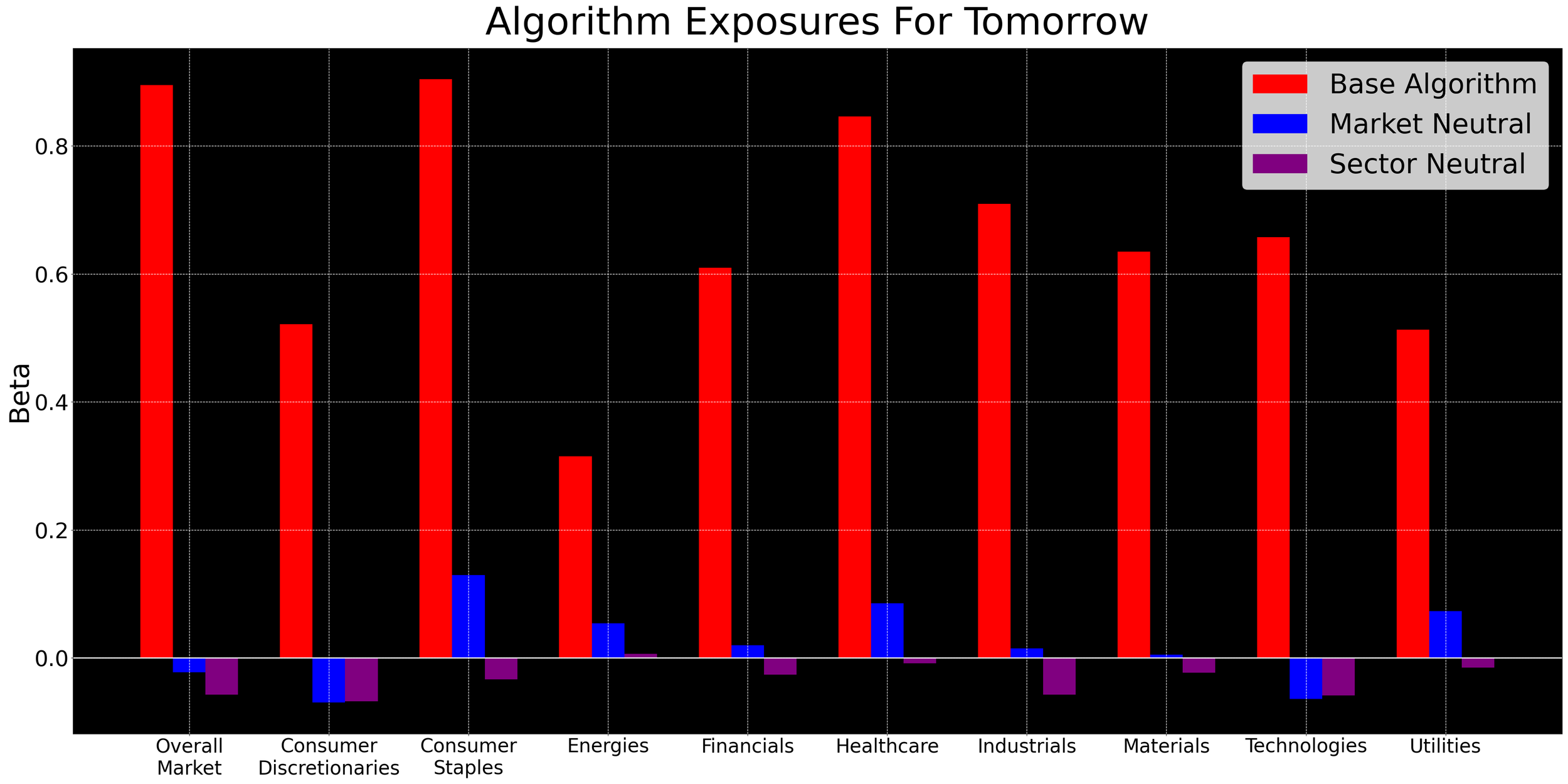Weekly Algorithm Review: 04/22/2023 to 04/28/2023
Performance Rankings
Long Term Portfolio: +1.11%
Base Algorithm: +0.91%
Overall Market: +0.87%
Variable Market Neutral: +0.61%
Market Neutral: +0.25%
Variable Sector Neutral: +0.14%
Sector Neutral: -0.47%
The base algorithm underperformed by 20 bps this week. It failed for one reason above all others: NVDA. As you’ll see below, the base algorithm would have defeated the long term portfolio by more than 30 bps, had it held no NVDA. As well, cumulatively, over the last 4 weeks, NVDA has been a net negative for us.
I’ve discussed in the past what it would take for us to change the algorithm itself, but I’d like to take this opportunity to discuss something different: what would it take for us to drop a ticker from our portfolio? Earlier this week, I discussed it with the HK staff, and we’ve reached a few conclusions.
First and foremost, we are officially throwing up a red flag around NVDA. It will continue to show up in recommendations, but we think it’s time to think twice about it. This isn’t financial advice, but if I personally were trading with the HK algorithm, I would strongly consider either ignoring NVDA recommendations, or capping my holdings to a level I’m more comfortable with (say 5% of holdings each day).
At this time, we are not dropping NVDA from our portfolio, or stopping the algorithm from recommending it. The reasons for this are a bit more complicated, but it boils down to the science yield. Even if we’re giving NVDA many more second thoughts, it’s of great use to us to see how well the algorithm does with trading it, and how well we, as human traders, can call its success and failure. We get very few cases like NVDA, where the algo recommends >30% of its allocations on it, before winding down. The more we can see of it, the better the next version of the algorithm is going to be.
The other reason for this decision is, quite simply, we don’t know if NVDA is about to turn around and go on another major tear. We have the choice now to either drop it from the algorithm, or keep it in. This presents us 2 possible negative outcomes to consider:1. We drop NVDA from the portfolio. NVDA climbs, and we miss out on a lot of profit.
2. We keep NVDA in the portfolio. The algorithm continues trading NVDA poorly, and dragging down results.
If the algorithm was advising something that we knew for a fact was a bad move, we’d modify it without hesitation. But we have to consider the possibility that it’ll go on another tear with NVDA. We’d rather report “The algorithm has made bad recommendations - we are working on an updated version that does X, Y, and Z differently to prevent it happening again” than to say “We made a bad call, but we’re just not gonna make another one” - and I suspect most of you feel the same way. For that reason, even though we’re advising against following its NVDA calls blindly, we’re still allowing it to make those calls. Those calls might end up right, and even if they aren’t, we’ll learn a lot about how to improve our algorithm.
So what would it take for us to drop NVDA from the algorithm? The short answer is: news and fundamentals. The algorithm is technicals-only; it doesn’t account for news or fundamental analysis of stocks it recommends. We have to do that part when selecting our portfolio. Therefore, to override the algorithm’s technical analysis (without wanting to modify the algorithm itself), we would have see negative news, or have a long-term negative forecast for the ticker in question. This would represent, in no uncertain terms, major negative factors that the algorithm isn’t accounting for. We’re still bullish on NVDA for the long-term. Until that changes, it will remain a part of our algorithm.
To summarize: we are raising red flags around NVDA. If I was trading with the algorithm, I would cap my holdings of NVDA for the short term. That said, we are still allowing the algorithm to recommend NVDA because seeing it, and our interactions with it, will help us to develop stronger future iterations of the algorithm.
On the subject, I want to clarify that NVDA hasn’t ruined our results - quite the opposite. Despite a rough month, a fantastic March still makes it our single best ticker of the last 60 days. This is the main reason our algorithm doesn’t try to do more uniform allocations - doing so would lead to us missing the boat on plays like this - something we see in backtests as well.
What’s In The Pipeline?
We’re going to be spending most of this week revamping our grapher bot. We’ve subscribed to some options data, so expect some major utility on them. More details will be made available over time, but think price history of an option, graphical representations of max pain and option volume - the works.
Misc. Data For The Week










